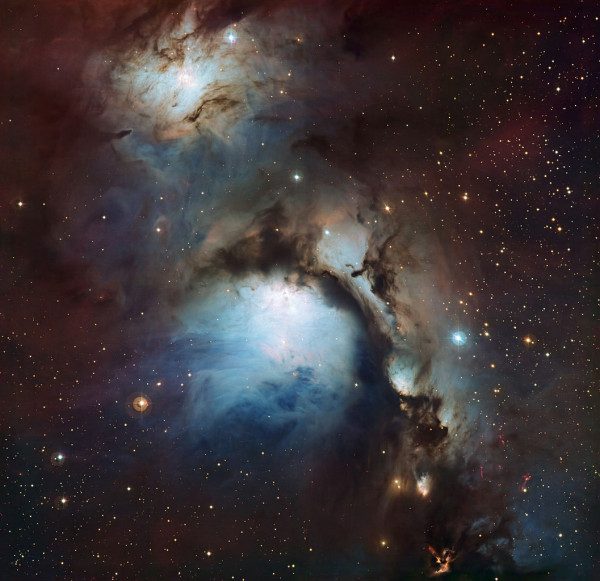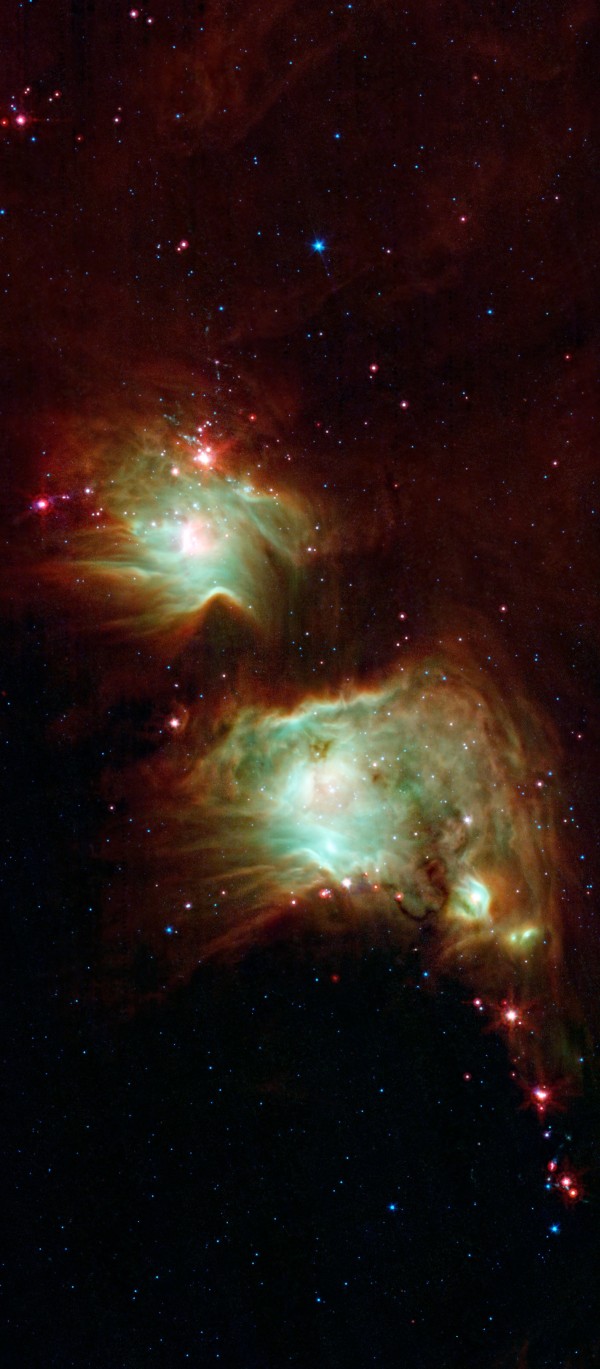“Life is a mirror and will reflect back to the thinker what he thinks into it.” -Ernest Holmes
When you've got a gas cloud in space that emits light, it's only for one of two reasons:
- Either it's at high enough temperatures that its atoms are excited and it's emitting its own light as the electrons fall in energy and recombine with nuclei,
- Or it's cool and neutral, and is reflecting light off of the brightest stars in its vicinity.
That latter case has a dead giveaway: it always shines blue.
 Image credit: ESO/Igor Chekalin, via http://www.eso.org/public/images/eso1105a/.
Image credit: ESO/Igor Chekalin, via http://www.eso.org/public/images/eso1105a/.
But there's much more to these reflection nebulae than their color, there's also some amazing astrophysics at play, something we reveal when we look in infrared light and also at the dust lanes that obscure our view.
More like this
Lindsay Beyerstein: Spitzer linked to prostitution ring
New York Governor Eliot Spitzer is going to resign any moment now.
Mr Spitzer, 48, made a public apology on Monday for what he called his unacceptable behaviour, but did not give details.
Senior Review and rankings for the ten missions under evaluation for NASA Astrophysics in 2008 have been published.
Governor Spitzer, only recently deposed for committing the crime of being a Democrat on the Republican Hit List, has already launched a new career as a Telescope:

